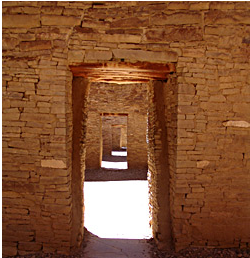Publication Date
5-1-2016
Abstract
The Gallina area is an ideal location for an investigation into social violence using GIS-based methods. Situated in northern New Mexico, the remote Gallina region and the Gallina phase (A.D. 1100\u20131300) in particular have a clear record of violence that peaked in the latter half of the 13th Century (Borck and Bremer 2015; Constan 2011). Although there is an abundant record of violence, the source of the violence remains unclear. Were the Gallina attacked by an outside group or groups? Did the Gallina turn on each other? Or was some combination of internecine conflict and foreign attacks to blame? The Gallina do not appear to have been restricted territorially by outside groups and there are few indications that they influenced neighboring groups. The Gallina phase has been characterized as an area of intense conflict, with researchers citing the many defensible sites (towers, cliff houses, and site locations with limited access), burned sites, lack of trade wares, and skeletal evidence of violence throughout the region (Byrd 2010, 2015; Borck and Bremer 2015; Constan 2011, 2015; Dick 1976; Green 1956; Hibben 1939). The construction of defensible structures, such as towers and cliff houses, involved a significant investment of time and resources. Their specific locations on the landscape were likely the result of careful planning with an inherent concern for defense as demonstrated by location and design. Investigating the placement of these structures on the landscape and their relationship to other settlements (including intervisibility) could demonstrate the existence of alliances between communities, territorial boundaries, potential regional organization, and from where communities most felt threatened. In addition, examining the locations of settlement clusters and the distribution of trade wares can clarify the nature of interactions among settlements. Finally, identifying spatial and temporal patterns of warfare-related sites can be used to help identify both the source and the objective of attacks. This study specifically investigated how intraregional conflict and interregional conflict result in different spatial trends seen in the archaeological record by comparing spatial datasets to three hypotheticals models of tribal conflict. The three models of conflict included conflict between Gallina groups (internal), conflict between Gallina and outside groups (external), and a combination of internal and external (mixed) conflict. Based on ethnographic and archaeological research, the models identify a suite of regional settlement characteristics that have been previously demonstrated as relevant to warfare (Haas 1990; Haas and Creamer 1993; LeBlanc 1999; Solometo 2004; Wilcox and Haas 1993), such as settlement density, defensibility of sites, sites with evidence of violence, and interaction between Gallina settlements. For each model, variations for each of these settlement characteristics are correlated with expected settlement patterns and expected results from different spatial analysis techniques. The settlement data for documented sites within the study area were then compared to the expected results for each model, suggesting that the violence in the region was the result of groups migrating from the Four Corners region to the Rio Grande Valley.
Keywords
Archaeology, Gallina, GIS, Social Violence, Settlement Patterns
Document Type
Dissertation
Language
English
Degree Name
Anthropology
Level of Degree
Doctoral
Department Name
Anthropology
First Committee Member (Chair)
David A. Phillips, Jr.
Second Committee Member
James L. Boone
Third Committee Member
Michael W. Graves
Fourth Committee Member
Christopher D. Lippitt
Recommended Citation
Byrd, Adam Muir. "A GIS-Based Investigation into Social Violence and Settlement Patterns in the Gallina Area of the American Southwest." (2016). https://digitalrepository.unm.edu/anth_etds/11

